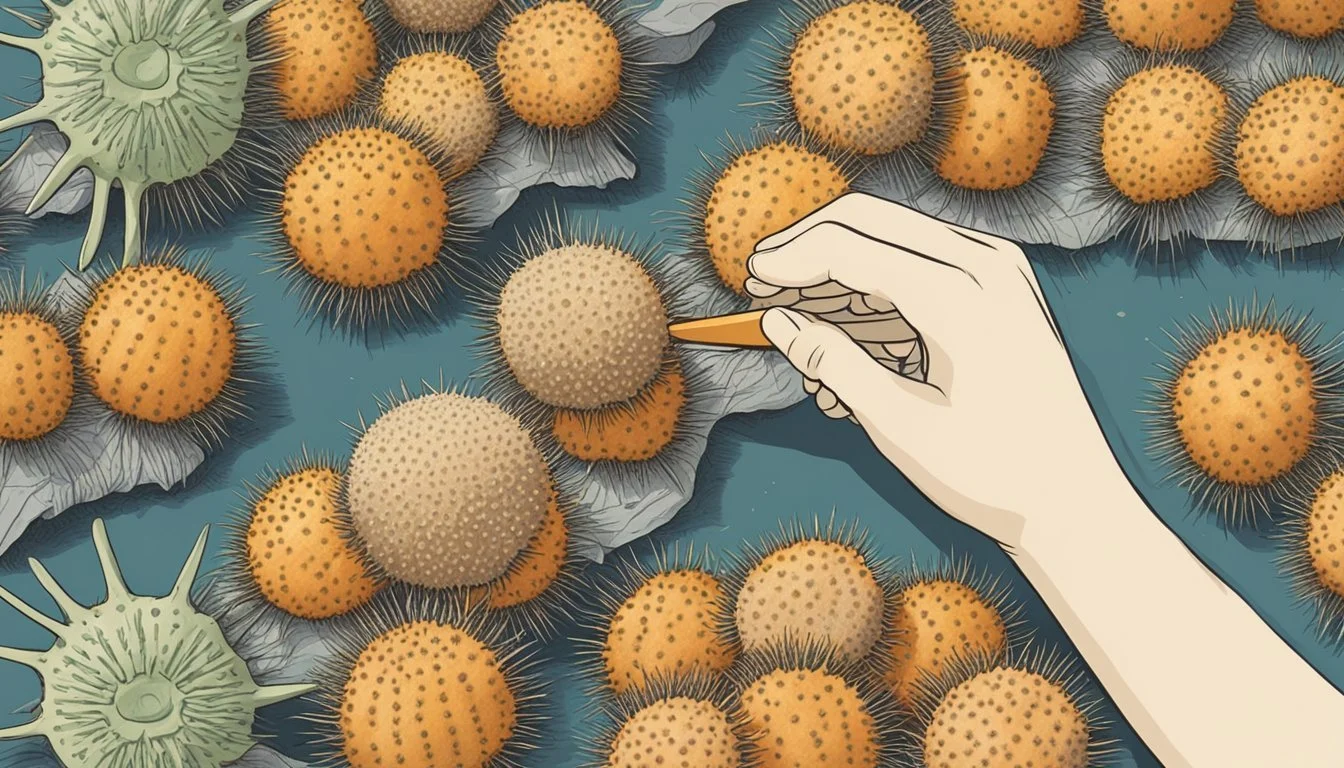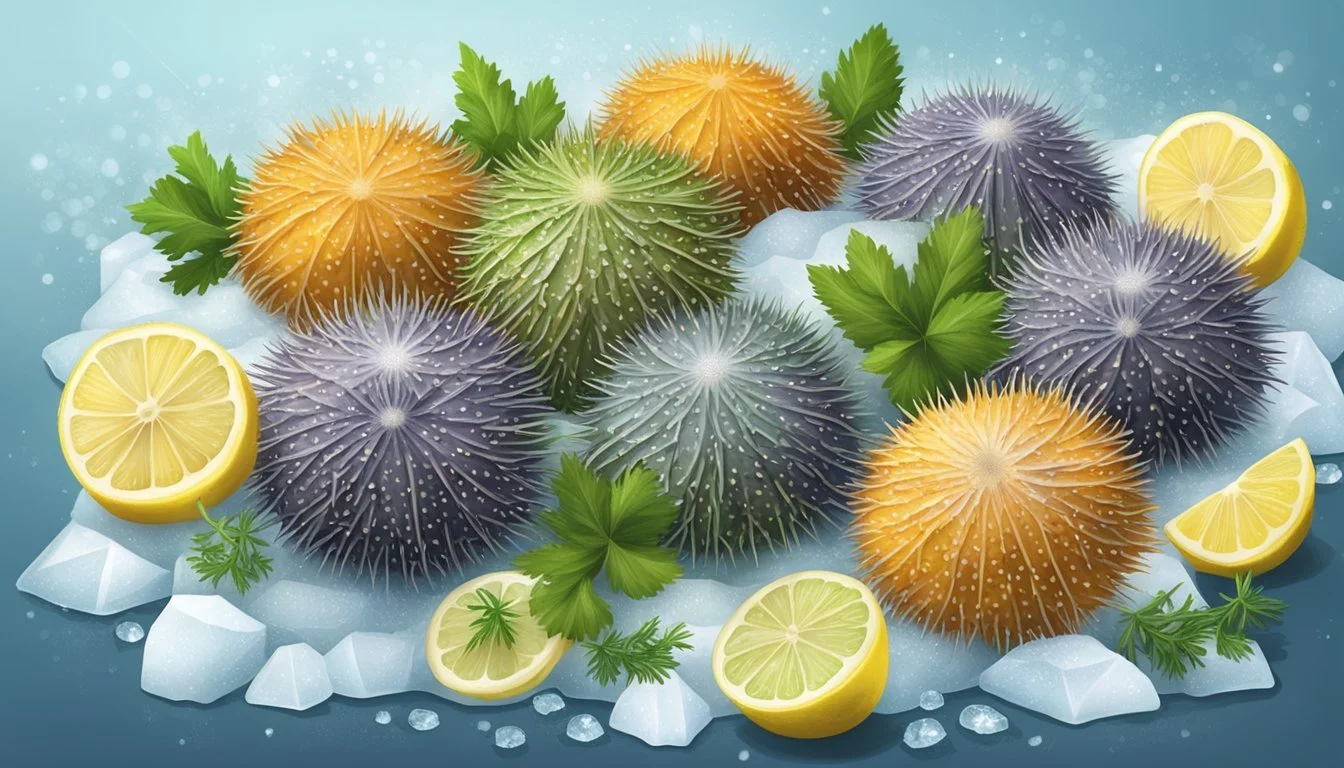Can Diabetics Eat Sea Urchins?
Understanding Nutritional Benefits and Risks
Diabetes management often involves careful dietary choices, and for those with an adventurous palate, sea urchins may present a unique option. Given their specialty status in various cuisines, it's natural to wonder whether they fit into a diabetic diet. Fortunately, sea urchins can be a safe and nutritious option for people with diabetes.
Sea urchins are low in carbohydrates and high in protein, making them a suitable choice for maintaining stable blood sugar levels. Additionally, they are a source of omega-3 fatty acids, which are beneficial for cardiovascular health—a crucial consideration for diabetics.
The inclusion of sea urchins in a meal can add a rich, briny flavor without compromising dietary restrictions. Their unique taste and nutritional benefits make sea urchins an intriguing component for a diabetes-friendly diet.
Understanding Diabetes and Diet
Diet plays a significant role in managing diabetes, particularly by regulating blood sugar levels and supporting heart health. Eating the right foods can improve insulin sensitivity and lower the risk of complications associated with diabetes.
Impact of Diet on Blood Sugar Levels
The management of blood sugar levels in people with diabetes, especially type 2 diabetes, is crucial. Carbohydrate intake directly influences blood sugar levels. Foods high in refined sugars and simple carbohydrates can cause rapid spikes. Conversely, complex carbohydrates, fiber-rich foods, and proteins help stabilize blood sugar by slowing down digestion and glucose absorption.
Given these dynamics, patients are often advised to consume a balanced diet. This diet generally includes whole grains, lean proteins, healthy fats, and plenty of vegetables. By carefully selecting their food, diabetics can better control their blood sugar levels.
Importance of Omega-3 Fatty Acids and Heart Health
Omega-3 fatty acids are essential for heart health, an important consideration for diabetics. These fatty acids, found in abundance in fatty fish like salmon and mackerel, reduce inflammation and support cardiovascular function. They can help lower triglycerides, reduce blood pressure, and improve overall heart health.
Seafood rich in omega-3s not only benefits the heart but also supports better insulin sensitivity. This can be particularly valuable for diabetics, who are at an increased risk of heart disease. Regular consumption of omega-3s helps in managing common diabetes complications.
Seafood in a Diabetic Diet
Seafood can be a healthy addition to a diabetic diet. It's high in protein and low in unhealthy fats. Choices like salmon, trout, and sardines not only offer omega-3 fatty acids but are also low in mercury. These benefits make them suitable for regular consumption.
Incorporating seafood helps diversify the diet while providing essential nutrients. Given the specific dietary needs in diabetes management, seafood offers a valuable source of lean protein and healthy fats. This supports blood sugar control and overall health.
By making informed choices, individuals with diabetes can enjoy a variety of nutrient-dense foods while managing their condition effectively.
Sea Urchins as a Food Source
Sea urchins are not only a delicacy in various cuisines, but they also offer a unique and nutritious profile. Different species provide varying tastes and nutritional benefits, contributing to their popularity.
Nutritional Profile of Sea Urchins
Sea urchins are nutrient-dense and offer a range of essential nutrients. They are a good source of protein, important for muscle repair and growth. An average serving of sea urchin can provide about 13 grams of protein.
Additionally, sea urchins contain healthy fats, including beneficial omega-3 fatty acids, which support heart health. They are low in saturated fat but can contain around 140 milligrams of cholesterol per serving.
Vitamins such as vitamins A and E, along with minerals like zinc and magnesium, are also present in sea urchins. These nutrients contribute to various bodily functions, from immune support to bone health.
Distinctive Aspects of Different Sea Urchin Species
Three commonly consumed species are the red sea urchin, green sea urchin, and black sea urchins.
The red sea urchin (Strongylocentrotus franciscanus) is often found along the Pacific coast from Alaska to Baja California. Known for its large size and rich, creamy texture, it is highly sought after.
Meanwhile, the green sea urchin (Strongylocentrotus droebachiensis) is smaller and offers a slightly sweeter and more delicate flavor. This species is typically harvested in colder waters.
Black sea urchins are less common but still valuable in culinary circles. They provide distinct flavor profiles depending on their habitat, making them a versatile ingredient.
Different species not only vary in flavor but also in their nutrient compositions, adding variety to dietary choices.
Selecting and Preparing Sea Urchins
When choosing sea urchins, it is crucial to ensure freshness and safety to enjoy a high-quality seafood experience. Proper preparation also plays a vital role in safely extracting and consuming the edible parts.
Safely Extracting and Consuming Sea Urchin
To ensure safe consumption, wear gloves to handle the unprocessed sea urchins due to their spines. Opt for live urchins that feel firm and heavy for their size, indicating they are fresh. Avoid those with a strong odor, which can signify spoilage. The edible part, known as uni or roe, is the bright orange or yellowish portion inside.
Carefully clean your tools before cutting to avoid contamination. Use kitchen shears to cut around the mouth of the urchin, removing the top to access the uni. Control your movements to prevent damaging the delicate uni. The uni can be eaten raw, offering a sweet, buttery flavor, or incorporated into various dishes.
Incorporating Sea Urchin into Meals
Sea urchin uni is a versatile ingredient in seafood cuisine. It can enhance dishes with its unique flavor and creamy texture. Incorporate uni into sushi or serve it with sophisticated garnishes like lemon zest and herbs for a refined touch.
For a simple yet indulgent meal, toss the uni with spaghetti, olive oil, and garlic to create a decadent pasta dish. Uni can also be added to risottos or soups for a rich, umami boost. Regardless of the dish, using fresh uni will ensure the best taste and quality.
Sea Urchins in Culinary Traditions
Sea urchins are enjoyed in various culinary traditions across the globe. This part of the article will explore their prominent use in sushi and sashimi as well as their significance in other global delicacies.
Sea Urchin in Sushi and Sashimi
In Japanese cuisine, uni is a prized ingredient, prominently featured in sushi and sashimi. Uni, the roe of the sea urchin, is known for its rich and buttery texture. It is often served raw on a bed of rice or as a topping for sashimi, gently accentuating the seafood's flavor.
The distinct taste of uni varies depending on the species, diet, and habitat of the sea urchin. Murasaki urchins, found in Japan, are particularly sought after for their mild and sweet taste, making them a perfect match for sushi and sashimi dishes. Chefs in Japan carefully select the freshest uni to ensure premium quality and flavor. Uni sushi offers an unparalleled indulgence that stands out in the world of sushi.
Global Delicacies Featuring Sea Urchins
Beyond Japan, sea urchins are considered a delicacy in many coastal cultures. In the Mediterranean, uni graces various dishes, from pasta to gourmet spreads, adding a unique, creamy component. The sea urchins in these regions are often harvested from cold waters, such as those around Italy and France, ensuring top-notch quality.
In Chile, locals indulge in erizo, another term for sea urchin, valuing its vibrant flavor and luxurious texture. It is frequently consumed raw, much like in Japanese cuisine, but it's also enjoyed in various cooked dishes. Erizo is celebrated in traditional dishes and gourmet creations alike, emphasizing its versatile appeal.
Health Considerations for Diabetics
When considering sea urchins for a diabetic diet, it's essential to evaluate their safety and understand how to balance their nutrients while managing carbohydrate intake.
Evaluating the Safety of Sea Urchins for Diabetics
Sea urchins are generally safe for consumption when adequately harvested and prepared. They are rich in nutrients such as zinc and iron, which support immune function and overall health.
Sea urchins also contain minimal carbohydrates and moderate levels of protein and healthy fats, making them a potentially good option for diabetics. The low-carbohydrate content helps prevent spikes in blood sugar levels, a crucial consideration for diabetes management.
Saturated fat in sea urchins is typically low, which aligns with maintaining a heart-healthy diet. Since maintaining good blood pressure and reducing inflammation are important for people with diabetes, these attributes make sea urchins a beneficial food choice.
Balancing Nutrients and Managing Carbohydrate Intake
Apart from being low in carbohydrates, sea urchins are also a good source of omega-3 fatty acids, which are known to promote heart health by lowering triglyceride levels. Including sea urchins as part of a balanced diet can help reduce the risk of heart disease, which is higher in people with diabetes.
Consider pairing sea urchins with other low-carb, high-fiber foods. This combination can provide satiety and help regulate blood sugar levels. For instance, a salad with plenty of vegetables and sea urchin can be a nutrient-rich, low-carb meal.
Limiting overall fat intake is also vital. While the fats in sea urchins are mostly healthy, it's important to intake them in moderation to maintain balanced lipid levels. This approach helps manage both blood glucose and overall health efficiently.
Additional Health Benefits of Sea Urchins
Sea urchins provide numerous health benefits that make them a valuable addition to one's diet. Notably, they are rich in omega-3 fatty acids and essential vitamins, contributing to inflammation reduction and immune system support.
Omega-3 Fatty Acids and Inflammation
Sea urchins are an excellent source of omega-3 fatty acids, which are well-known for their anti-inflammatory properties. Omega-3s help mitigate chronic inflammation, a key factor in many diseases, including diabetes.
These fatty acids can also improve cardiovascular health by lowering triglyceride levels and reducing the risk of heart disease. Incorporating sea urchins into the diet provides a natural way to obtain these heart-healthy fats. Given their low-calorie content, sea urchins are a heart-healthy and weight-conscious choice.
Vitamins and Immune System Support
Sea urchins are packed with essential vitamins and minerals that support the immune system. They contain vitamins such as vitamin C and vitamin D, both crucial for maintaining a robust immune response.
Vitamin C is known for its antioxidant properties, helping to protect cells from damage. Vitamin D, on the other hand, plays a key role in immune function and bone health. Additionally, sea urchins offer a good amount of protein, aiding in muscle repair and overall bodily functions. Regular consumption can help ensure that the body gets a balanced mix of nutrients essential for health and well-being.
Intermediate and Advanced Culinary Applications
In both home kitchens and professional settings, sea urchin offers numerous unique applications. This section explores methods for preparing and presenting sea urchin dishes, highlighting techniques and key ingredients used by cooks and chefs.
Creating Sea Urchin Dishes at Home
Home cooks can elevate their culinary skills by incorporating sea urchin into various dishes. One simple yet sophisticated approach is preparing sea urchin toast. Toast a slice of quality bread, spread a layer of fresh butter, and top with sea urchin roe. A drizzle of lemon juice adds bright acidity.
For a more decadent option, sea urchin can be served over rice or incorporated into soups. For example, a creamy sea urchin risotto uses chicken broth, garlic, and parmesan cheese. Add the roe at the end to maintain its delicate texture and flavor. Sea urchin can also be blended with soy sauce and other ingredients to create a unique dipping sauce.
Professional Techniques with Sea Urchins
Professional chefs often use advanced techniques to highlight sea urchin’s unique flavor profile. One approach involves serving it raw, maintaining its natural taste. Chefs might place sea urchin atop a bed of ice to keep it chilled. It can also be plated aesthetically with seaweed for added texture and visual appeal.
Another professional technique involves creating a sea urchin butter sauce. By blending melted butter with the roe and seasoning it with salt and pepper, this sauce pairs exceptionally well with seafood dishes. Additionally, sea urchin is sometimes used creatively in sushi, where its rich flavors complement rice and wasabi effectively.
By mastering these applications, both home cooks and chefs can create memorable dishes that showcase the unique flavors of sea urchin.
Conclusion
Sea urchins are nutrient-rich, containing protein, omega-3 fatty acids, and vitamins beneficial to overall health.
Diabetics need to consider the potential risks. Heavy metal contamination and allergic reactions are concerns. Exercise caution and consult with a healthcare provider before adding sea urchins to their diet.
Moderate consumption of sea urchins can be heart-healthy due to their omega-3 content. It can support cardiovascular health and contribute positively to a balanced diet when combined with regular exercise.
Key points to remember:
Focus on safe and appropriate consumption.
Be aware of allergic risks.
Consult medical advice for personalized guidance.









